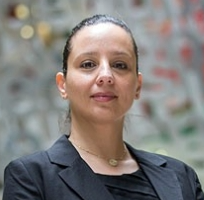Dire Dieu par la musique dans la propagande guerrière d’hier à aujourd’hui: Le cas de l’Empire assyrien et de Daech
By Éric Bellavance and Vivek Venkatesh


Dire Dieu par la musique dans la propagande guerrière d’hier à aujourd’hui: Le cas de l’Empire assyrien et de Daech
By Éric Bellavance and Vivek Venkatesh
Director of Project Someone as well as the Centre for the Study of Learning and Performance at Concordia and UNESCO Co-Chair for the Prevention of Radicalisation and Violent Extremism, Vivek Venkatesh, and colleagues, examine aspects of propaganda in ISIS videos. Other Project Someone members co-authoring this article are Jeffrey Podoshen, Jason Wallin and Jihan Rabah.
Jeff Podoshen talks about hate speech, freedom of expression, and IS on social media.
Jihan Raban talks about hate speech, freedom of expression, and building resilience to propaganda.


Jihan Rabah is an analyst and educational development leader. Her recent professional experiences include being Vice President of Research and Analysis at eConcordia/ KnowledgeOne Inc, Co-Principal Investigator of Project SOMEONE, and a member of the UNESCO Chair on the Prevention of Radicalisation and Violent Extremism.